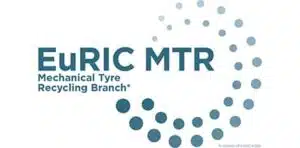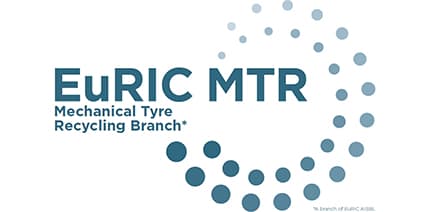
How have you worked to increase your gross sales in the past? Have you sent out mailers? Hired an outside sales rep? Made cold calls? Shared your data through a third-party?
I stumbled across a simple idea a few years ago that changed the way I focus on increasing gross sales. Before I get ahead of myself, let me backup and explain another truth I live by: You can’t improve what you don’t measure. By measuring anything, you focus on it and start working to influence it. An example of this would be weighing yourself every morning when you get out of bed. By making a simple, mental note of your weight, you modify what you eat and how much you exercise on that one day. If you weigh on a daily basis, you will probably be working to lose weight or, at least, maintain your existing weight. By measuring it and knowing where you stand, you empower yourself to make minor adjustments on a daily basis that allow you to eventually reach your goal.
My goal is 175 lbs and this morning’s scale reading was 190.8. Do you think that measurement modified what I ate and how much I exercised today? You bet it did. I have a goal, a plan, and a desire to achieve it. I have a clearly-defined goal, a plan for how to achieve it, and I measure my results on a daily basis. Now, let’s use that same idea to influence the gross sales at your facility.
Gross Sales can be broken down to three basic factors: Frequency, Reach, and Yield. Let me explain what I mean by each of these terms:
Frequency
Frequency is the number of parts that are sold to a specific customer over a set amount of time. I like to use one month as the unit of measurement for this tool. I developed a system that allowed me to measure the number of parts that are sold to each customer over a single month. For example: I sold 8 parts to XYZ Body Shop in March and 2 parts to ABC Body shop in the same month. For this simple example, we will assume that I only had two customers in the month of March – ABC & XYZ. For the month of March, I averaged 5 parts per customer. This is the simple average [(8+2=10); (10/2=5)] of the two results. By knowing this number, I can now start experimenting with ideas to increase it. I found that service and relationships both influence repeat-purchases. I began to work to improve delivery times, quality of the part delivered, and driver training. At the same time I began to work with the sales team. I know that people order parts from salespeople that they like and trust. I started by asking a basic question: do my salespeople KNOW their customers? Do they know the number of kids they have? Their birthdate? Their anniversary? If they don’t know those simple facts about their customer, can I expect that customer to buy more parts from us? Maybe: price is a factor in this example, too. But, for this example I’m going to focus on Service and Relationships. I found that by measuring the frequency of times that a customer buys a part from us and by sharing that measurement with the sales team and the delivery team, they would use that data to treat the customer differently. By defining a goal of 8 parts per month, when a customer is identified as only buying 2 parts per month, everyone involved with that customer is going to work to help that relationship. You just saw it: because I measured the data, my team worked to improve it. Increasing the frequency that a customer buys from me is only one-third of the formula. Let’s look at the next factor.
Reach
Reach is the number of customers that we sell to in a given measurement of time. Again, I always use a month for this measurement. We typically average between 1,100 and 1,150 unique customers per month. I know that number because I measure it. I’ve gone a step further and actually measure that number for each delivery route. By measuring it to that granular level, I can address issues that may exist with a particular driver. I also measure that number by salesperson. I found that my top producers can handle about 250 unique customers per month before issues started to develop. I was also able to identify salespeople that needed some help to reach new customers. So, I started buying mail lists, mailing postcards, and assigning prospects to salespeople. I challenged salespeople with calling new prospects in an effort to increase the number of customers that they serviced. I empowered each salesperson to send doughnuts, lunch, or promotional items through the delivery drivers in an attempt to gain new customers. It worked. Again, by measuring our reach, I was able to find solutions that allowed us to increase it. I had to measure it before I could influence it though.
Yield
Yield is the average part price for each line item sold. Wow; there are a lot of factors that influence this number: The type of cars that you buy, the amount that you allow salespeople to negotiate, limits you have setup for your inventory personnel – the list could just keep going on and on. I won’t even try to cover the ideas I have running through my head here. The point is: by increasing the average selling price of each part while maintaining your Frequency and Reach, your gross sales will increase. Again, the same idea exists here: if you can’t measure it or choose not to measure it, how can expect to improve it?
Let’s wrap this idea up nice and neat: Frequency x Reach x Yield = Gross Sales. By measuring each factor and deploying techniques to improve them, you can use that data to influence your team towards a clearly-identified goal. Here are some examples of how a single movement on one factor can increase your Gross Sales:
5 Parts per customer x 1,000 customers x $200 average part price = $1 Million in Gross Sales
5.5 Parts per customer x 1,000 customers x $200 average part price = $1.1 Million in Gross Sales
5 Parts per customer x 1,100 customers x $200 average part price = $1.1 Million in Gross Sales
In example 2, the number of parts increased by 10% and it caused the Gross Sales to increase by 10%. In example 3 (when compared to example 1), the number of customers increased by 10% and it caused the Gross Sales to increase by 10%. If we had worked to increase both the number of parts AND the number of customers during the same period of measurement, we could have increased our Gross Sales to $1.21 Million – a 21% growth.
We often think: How can I increase my sales? You MUST break down your sales and work on smaller issues: Frequency, Reach, and Yield. You can do it. Go for it.
Chad Counselman











